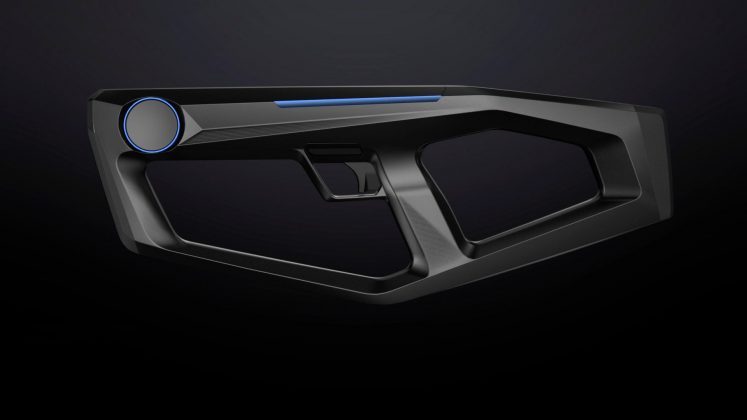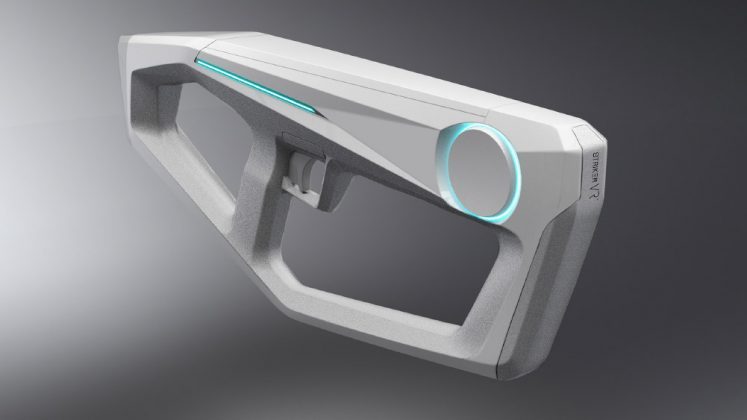The Entire VR Industry in One Little Email
The Daily Roundup is our comprehensive coverage of the VR industry wrapped up into one daily email, delivered directly to your inbox.
Striker VR, maker of high-end haptic VR gun peripherals for the out-of-home market, announced today it has raised a $4 million investment and plans to use the funds to make its first move into the consumer VR space.
Striker VR’s Arena Infinity VR guns packs perhaps the most powerful haptic punch you’ll find in any VR gun peripheral. They’ve been deployed at VR attractions from the likes of Spaces, Nomadic, and more. VR experiences are able to take advantage of versatile haptics which can create sensations that mimic a wide range of virtual objects, all the way from a ‘charge up’ sci-fi gun to a chainsaw. But with prices in the thousands of dollars, the consumer VR segment hasn’t been part of the company’s strategy, until now.
The company exclusively revealed to Road to VR that it has raised a $4 million investment and plans to bring its technology to the consumer VR space. Striker VR described the investment as “strategic funding,” but didn’t disclose additional details on the participants of the investment.
With the cash infusion, the company says it plans to double its staff over the next year as it ramps up to launch a new version of its gun peripheral for the consumer VR market. While details on the device itself haven’t been fully revealed, Striker VR has shared a first look at the unique industrial design the company is aiming for, which appears to include trackpads on either side of the foregrip and possibly two additional capacitive inputs above the trigger.
Striker VR tells us it plans to support both PC VR and Quest, though it’s unclear exactly how they’ll handle tracking. The company’s prior VR guns have supported tracking via the high-end OptiTrack system or with SteamVR Tracking via and attached Vive Tracker.
On the PC VR side, it’s possible the company will choose to integrate SteamVR Tracking directly into the peripheral, or expect the end-user to supplement the device with a Vive Tracker. As for Quest support… it’s less clear how the company will approach it. Oculus has not opened its tracking system to third-parties, though we’ve seen some other VR peripherals attach the Quest controller itself to function as a tracker.
With full details not yet released, we don’t know exactly what haptic technology the Striker VR consumer product will use. The haptics in company’s high-end products are based on a large linear actuator (and large batteries), though ostensibly some sacrifices will need to be made in the name of price. The company claims that the consumer version will have “more haptics than any controller ever produced,” and says that more details are due in a future announcement.
Speaking of price—Striker VR isn’t ready to reveal pricing, but confirmed it’s targeting a sub-$500 price point, further stating, “depending on the final build, it might be significantly less.”
Figuring out how to attract developers to support the consumer haptic VR gun is likely to be Striker VR’s biggest challenge in entering the consumer VR segment.
In the PC VR space, no single haptic VR gun peripheral has found significant traction. Over on PSVR, however, the PS Aim accessory is generally well regarded and has seen support for more than 20 games, including some fairly major titles like Arizona Sunshine, Borderlands 2 VR, Farpoint, Firewall Zero Hour, and Doom VFR.
While PS Aim includes a joystick and nearly full input mapping to the PS4 gamepad, Striker VR’s consumer peripheral so far looks like it will rely on large trackpads and a fewer number of other inputs. This could make it more difficult for developers to build consumer games for the device, and perhaps less likely that existing games with PS Aim support could be ported to work with it.
Source: Read Full Article


